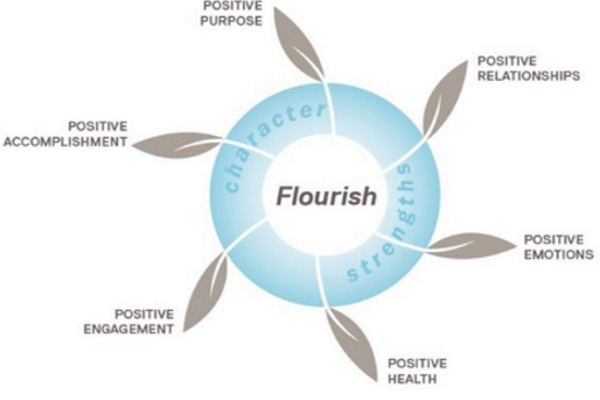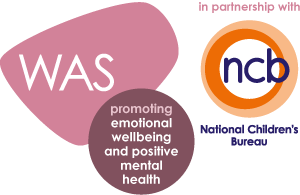Embedding wellbeing in the curriculum is more important than ever. Dr Helen O'Connor shares how 'positive education' has been introduced in her school, and how it can be adapted to suit different environments.

It's easy to predict what parents want most for their children. They want them to be happy, confident and content. The irony of schools is that we don’t teach these skills; rather, we teach children how to achieve success through discipine and learning and thinking skills.
Positive education is about teaching skills that enable wellbeing and achievement, and it comes without compromise to either.
When the deputy head of the school I worked in suggested I attend the Geelong Grammar School Positive Education conference in London, I have to say I was dubious.
As a clinical psychologist by profession, I was used to diagnosing and treating difficulties. I knew much less about positive psychology and how it can promote positive mental health.
I need not have been sceptical.
Our trainer, a dynamic individual, taught us that positive education is not a happyology. It's not about proposing that people can't feel sad; it's about managing day-to-day life and feeling great because we know how to deal with challenging situations.
I came away from this conference feeling 'very positive' about the programme at Geelong. However, they had spent numerous years setting it up; they had invested lots of their time having Martin Seligman (the founder of positive psychology) working with the entire system, including the teachers, cleaners, admin staff, gardeners, cooks and sports coaches.
Positive education is about breaking away from the traditional models of simply preparing and teaching the curriculum by also incorporating teaching pupils skills to optimise their wellbeing. They feel that this is a win-win situation, as both pupils and teachers benefit from a more positive, less stressful environment.
Academic attainment does not suffer. Indeed, research suggests that higher levels of wellbeing are associated with higher levels of academic performance.
Positive education is about living it, embedding it and learning it, and you do this by teaching the entire school community who commit fully.
Geelong focuses on:
Both are important to the development of the programme – you cannot have one without the other.

Taken from the Geelong positive education model
The model for positive education is visually depicted as six leaves coming together with a circle supported by character strengths, with flourishing as the core.
The leaves represent the six domains of positive education, those things that are 'taught':
Each domain has a set of skills and evidence-informed concepts. Underpinning the domains are character strengths which act as the supporting pathways to the domains.
Character strengths, positive traits that form your personality, play a pivotol role in a person’s positive development. Introducing character strengths to young people is critical to helping them understand themselves, others and their world.
Schools are very good at celebrating talents in subjects and sports, but less so at recognising the character strengths that enabled the pupil to reach that level.
So often we consider worries and difficulties rather than focusing on celebrating the good in each person. Learning and teaching character strengths allows people to be connected, and does not focus on a conversation about problems and challenges.
At Geelong, positive education lessons are adapted for age.
The model is a top-down type approach where pupils in the younger years have fewer positive education lessons than the older ones. As they progress through the school, they have more lessons focusing in closer detail on the concepts that have previously been taught.
Younger pupils may have 15-20-minute lessons whilst the older years have 45 minutes. Each lesson can be a stand-alone or it can complement the topics covered throughout the programme.
Other members of staff and I were enthused by the model and encouraged by the positive effects of considering wellbeing in this way. In 2017, we began to consider how we may develop a positive education that fitted an academically enriched independent girls’ school in Winchester.
Following the exact same model as Geelong would not be possible, particularly in the short-term, as any cynics of the model needed to be shown the advantages through a staged approach.
 Wellbeing for all
Wellbeing for allLooking to demonstrate a commitment to promoting wellbeing as a fundamental part of your school life?
The Wellbeing Award for Schools will lead you through a process of self-evaluation, action planning and accreditation.
In September 2018, we began our positive education curriculum, teaching lessons based on the Geelong model but more suited to our school.
Unlike Geelong, we felt our girls would benefit from a bottom-up approach where our younger pupils have more exposure to positive education than older years, and as they journey through the school, they will be able to adapt the skills learnt to help them deal with any problems that arise.
We started with our Year 7 pupils and their form tutors. We then plan to teach older years through the skills gained in Year 7, whilst also training teachers and tutors in the model.
Below are some examples of the types of lessons that occur in our positive education curriculum.
Both pupils and teachers benefit from a more positive, less stressful environment
Positive education is taught one hour each week, and we envisage this becoming part of our unique programme.
Our vision for the future is that all our girls will be exposed to the positive education programme, enabling them to grow with the skills needed to live an optimistic, resilient and healthy life.